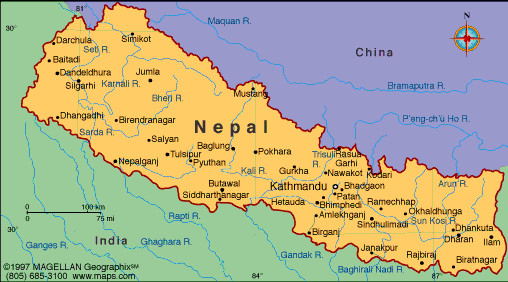
I'm a title. Click here to add your own text and edit me.
 |  |  |
|---|
Pictures below retrieved from http://pichost.me/1394162/ https://holidayexpereinces.wordpress.com/2015/01/18/some-unexplored-tourist-attractions-in-nepal/ http://www.thebrothersteam.com/destinations/nepal/nepal-leisure-tours/scenic-nepal-tour.html respectively.

Earthquake in Nepal

About Nepal
Nepal is 147 181 square kilometers (about 57,000 square miles) in size and in 2011 was home to 26,494,504 people and in 2001 65.6% of the population was involved in agriculture (Ministry of Agriculture Development [MOAD], 2012). Agriculture and forestry contribute 35% to the GDP, more than any other industry (MOAD, 2012). Poultry alone contributes 3.5% of the GDP (FAO, 2014). Nepal is located in south Asia and lies just south of China and north of India(Maps of World [MOW], n.d.). The average per capita income in 2009 was around $427(MOW, n.d.). Their major export partners are India Germany and the US of A, Nepal mostly exports grains, leather, clothing and carpets (MOW, n.d.). Only recently Nepal has started exporting poultry products, they exported eggs and broilers to Bhutan(FAO, 2014). Their lack of exporting poultry products is because they were not producing enough eggs and chicken meat for themselves (FAO, 2014). Nepal has more than a 1000 broiler farms and 500 layer farm that directly employ 70,000 people (FAO, 2014). Nepal’s poultry sector includes chickens, pigeons, ducks and other birds throughout different production systems (FAO, 2014). Other birds include an ostrich farm that is starting up with 300 birds, also a quail farm reports selling 20,000 quails every 5 months (FAO, 2014). Nepal currently has 98 hatcheries and 111 feed companies supporting the growing market (FAO, 2014). These hatcheries combined produce approximately 1,170,000 broiler chickens per week and 118,200 laying chickens per week (FAO, 2014). To feed the demand for poultry meat, currently at 150,000 Kg/day (FAO, 2014) and to meet a growing poultry population.
Nepal has seen two earthquakes this year destroying 1000's of homes and leaving families homeless (Sim, 2015). The earthquake has affected 8.1 million people in Nepal (Sim, 2015).
Picture retrieved from http://www.ibtimes.co.uk/nepal-earthquake-aerial-photos-remote-gorkha-district-show-entire-villages-reduced-rubble-1499000
Picture retrieved from https://www.google.ca/search?q=map+of+nepal&source=lnms&tbm=isch&sa=X&ved=0ahUKEwj_p96ihsDJAhWCLB4KHatGDXcQ_AUICCgC&biw=1137&bih=692&dpr=0.9#imgrc=SyZ6oSCpWllKdM%3A

About Nepals Poultry Sector
Picture retrieved from http://pichost.me/1394162/
There are four poultry sectors in Nepal, industrial, commercial with higher levels of biosecurity, commercial with lower levels of biosecurity and village or backyard (FAO, 2014). Since the Chantecler chicken greatest aspect is its ability to produce eggs in cold climates, it would be most suitable for a village or backyard where there is likely no shelter from the weather. 51.9% of households are involved in keeping chickens in a village or backyard (FAO, 2014). 67.8% of that 51.9%, is in the hills of Nepal, with an average flock size of 5 birds, but that ranges from 2 to 20 birds(FAO, 2014) Backyard chicken farmers produce eggs for their own consumption but also sell extra for cash (FAO, 2014). These backyard chickens produce just short of 94 million eggs (16% of production in Nepal) and 2017 tonnes of chicken meat (13.5% of production in Nepal) annually (FAO, 2014). Nepal is the 112th largest producer of chicken meat and 92nd largest producer of eggs in the world (FAO, 2014)


